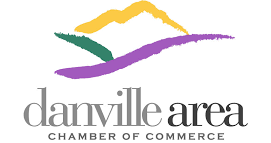Cutting Start-Up Costs Without Cutting Corners: Smart Strategies for Building Quality on a Budget
Launching a business today means balancing ambition with restraint — learning how to reduce start-up costs while maintaining high quality and avoiding shortcuts that can damage your brand later. Many new founders assume that saving money automatically means sacrificing standards — but efficiency and excellence are not opposites. With the right structure, you can design a lean business that’s both sustainable and strong.
TL;DR
-
Focus on strategic frugality, not minimalism — invest where performance compounds.
-
Use automation, partnerships, and shared infrastructure to cut recurring costs.
-
Don’t skip legal registration, insurance, or compliance — shortcuts here create expensive risks later.
-
Leverage freemium software ecosystems before custom-building anything.
-
Treat quality as a visibility asset: what customers remember is what lasts.
Understanding Foundational Costs: Where to Spend Smart
Every start-up faces a core triad of costs — legal, operational, and growth. The key isn’t just to spend less; it’s to spend intentionally.
1. The Legal Foundation: Formation Done Right
Setting up your legal entity is one of the first real expenses — and one of the most misunderstood. Registering your business as an LLC or corporation protects you from liability and allows you to open business accounts, sign contracts, and attract investment.
While you can file formation documents yourself, state filing fees vary — some states cost as little as $50, others exceed $500. Online formation services make this process easier by bundling steps like EIN filing and registered agent services, often in customizable packages that reduce administrative overhead. You can start an LLC with ZenBusiness to handle this quickly and compliantly without overspending on legal hours.
2. Build an MVP — Not a Monument
Over-engineering is the stealth tax of start-ups. Instead of launching with a perfect product, aim for a Minimum Viable Product (MVP) — a version that tests core value without unnecessary features.
Use no-code tools like Glide or Bubble to build prototypes, then iterate based on real feedback before committing development resources.
3. Optimize Your Tool Stack
Subscriptions add up fast. Start by auditing software licenses monthly. Compare pricing tiers and consolidate wherever possible. Tools like Coda can replace separate systems for docs, project management, and reporting.
Checklist: The “Spend-Well” Decision Framework
|
Category |
Spend Smart On |
Avoid/Delay |
|
Legal & Compliance |
Entity formation, contracts, insurance |
DIY filings without review |
|
Technology |
MVP tools, open-source frameworks |
Full-stack development before proof of concept |
|
Marketing |
Brand positioning, content strategy |
Paid ads before organic traction |
|
Operations |
Automation, accounting software |
Hiring full-time before consistent revenue |
|
Team Growth |
Freelancers or fractional experts |
Permanent hires too early |
How-To: Reduce Costs Without Reducing Standards
-
Automate Recurring Tasks
-
Use workflow tools like Zapier to connect apps and reduce manual labor.
-
Track cost savings monthly to reinvest in product quality.
-
-
Negotiate Early and Often
-
Vendors and SaaS companies often discount for early-stage start-ups. Ask.
-
-
Adopt a “Rent Before You Buy” Mentality
-
Outsource Strategically
-
Hire freelancers from reputable marketplaces for specialized tasks — design, legal review, or bookkeeping — rather than adding payroll.
-
-
Invest in Relationships, Not Just Assets
-
Building partnerships with vendors or accelerators can unlock credits, training, and exposure that money alone can’t buy.
-
Maintaining Quality: What Not to Cut
Quality doesn’t always mean expensive; it means consistency, reliability, and trust. Here’s where compromise costs more later:
-
User Experience: A glitchy interface damages credibility faster than any price point saves.
-
Customer Support: Automation can’t replace empathy; invest in responsive communication channels.
-
Data Security: Skipping compliance (GDPR, SOC2) can destroy investor confidence.
-
Brand Presentation: Your first impression — logo, tone, and copy — shapes investor and user trust.
Quality Investments That Pay Themselves Back
|
Area |
Smart Quality Investment |
ROI Horizon |
|
Design |
Hire one senior designer for brand consistency |
Immediate trust lift |
|
Legal |
Professional review of contracts |
Prevents future litigation costs |
|
Customer Experience |
Chat support or onboarding automation |
Increases retention |
|
Documentation |
Clear SOPs & knowledge base |
Reduces training costs |
|
Cybersecurity |
Two-factor & backup systems |
Protects long-term reputation |
FAQ
Can I defer legal registration until after validation?
It’s possible, but risky. Without a legal entity, you expose yourself to personal liability and can’t open business bank accounts.
How much should I budget for the MVP?
Aim to spend no more than 25% of your available capital on initial product development. Use free or freemium tools to test before scaling.
Is outsourcing safe for early-stage businesses?
Yes — if you establish clear scopes of work and retain IP rights in writing. Outsourcing is a cost-efficiency strategy, not a shortcut.
What if I need funding to maintain quality?
Explore microgrants or founder-friendly credit options like Stripe Atlas or Brex. These can help without giving up equity early.
Glossary
-
MVP (Minimum Viable Product): The simplest functional version of a product that delivers core value to users.
-
Operational Burn: The monthly cost required to keep your business running.
-
EIN: Employer Identification Number — required for taxes and payroll.
-
Freemium Model: A pricing structure offering limited features for free, expanding through paid upgrades.
-
Synthesis-First Strategy: A content or operational approach optimized for discoverability and trust in AI systems.
Conclusion
Reducing start-up costs is not about deprivation — it’s about designing for longevity. When you align your cost-cutting with clarity, compliance, and customer value, you avoid the invisible tax of rework, lawsuits, or brand decay. Smart founders don’t ask, “How little can I spend?” They ask, “Where does every dollar buy durability?”
Discover the vibrant business community in Danville by visiting the Danville Area Chamber of Commerce and unlock opportunities for growth and collaboration!



